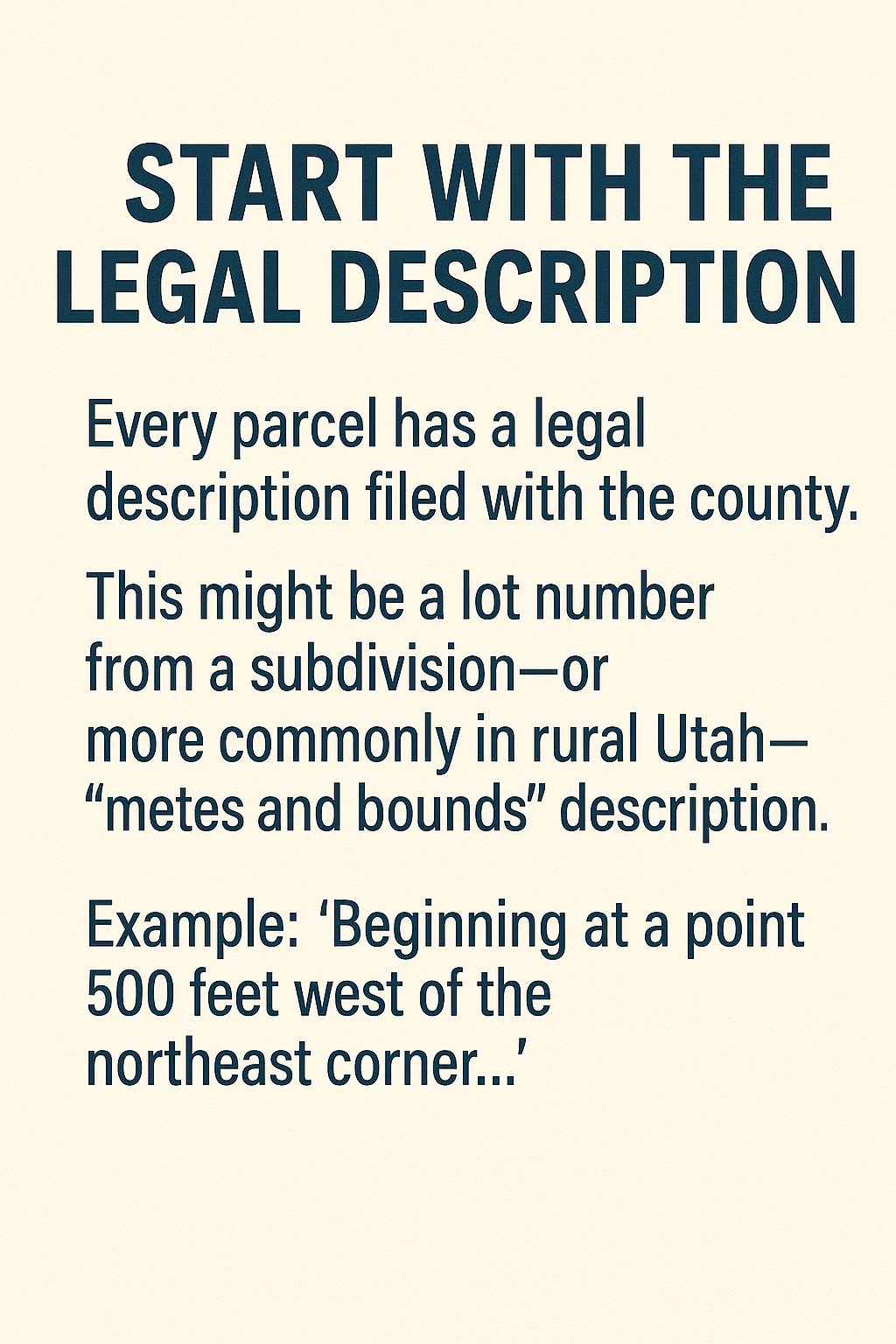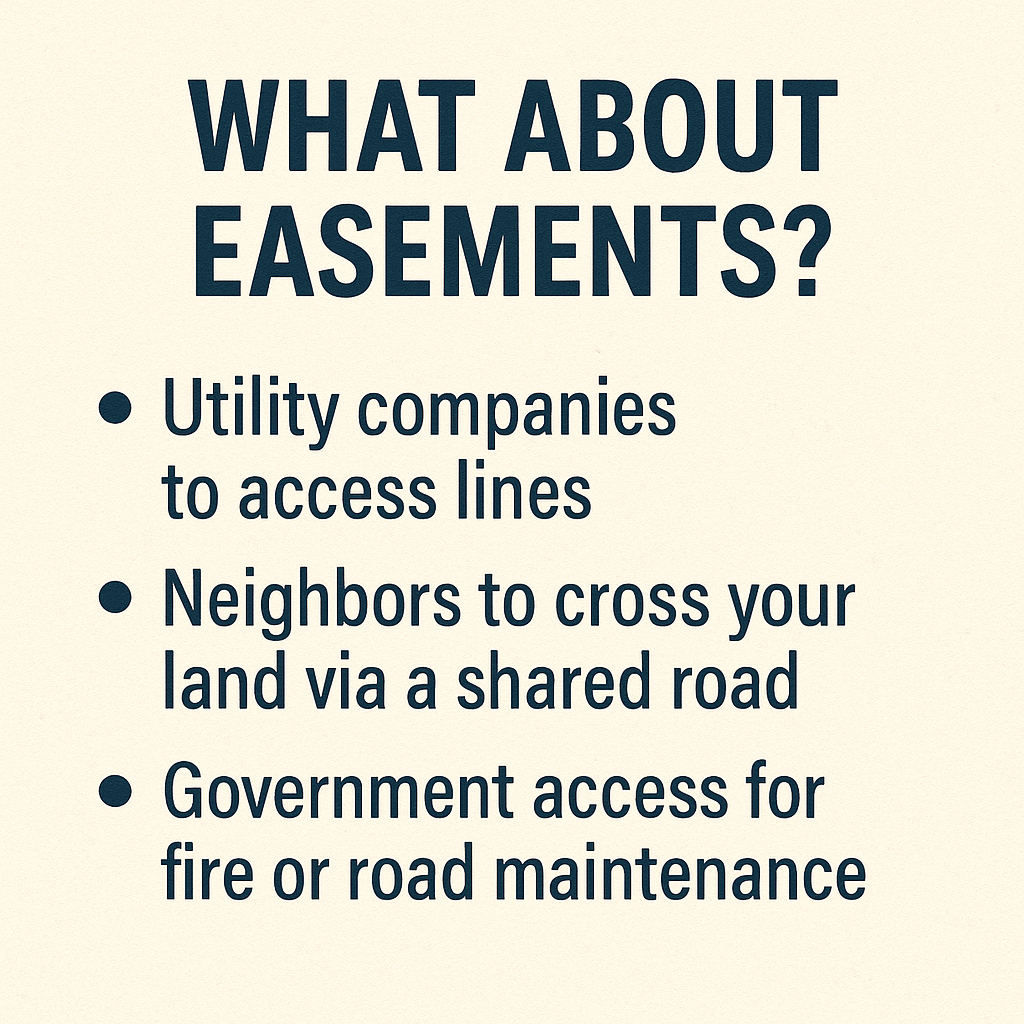How Property Boundaries Work in Rural Utah
Why Boundary Awareness Matters for Landowners
When you buy land in Utah—especially in rural areas—it’s easy to assume the lot lines are obvious. But fencing, natural markers, or even old roads don’t always match legal boundaries. Verifying your property lines helps avoid disputes, zoning issues, or building mistakes later.
Start With the Legal Description
Every parcel has a legal description filed with the county. This might be a lot number from a subdivision—or more commonly in rural Utah—a “metes and bounds” description. This uses distance and compass directions to describe the property.
Example: “Beginning at a point 500 feet west of the northeast corner…”
Reading these requires a trained eye. That’s why we recommend…
Getting a Professional Survey
A survey clearly maps out your land’s dimensions and corners. It’s especially useful if:
You plan to build
You’re installing fencing
You want to confirm access roads
You’re buying land with unclear or overlapping boundaries
A surveyor will place metal pins at each corner (called “monuments”), which you can find and mark.
What About Easements?
Some Utah properties—especially in unincorporated areas—include recorded easements. These allow things like:
Utility companies to access lines
Neighbors to cross your land via a shared road
Government access for fire or road maintenance
Easements are usually permanent and tied to the land title. Knowing where they are can help you plan structures, fencing, or driveways.
Fence Lines ≠ Property Lines
It’s common in rural Utah to see fences used as boundary markers. But in many cases, these were placed informally and may not reflect the actual line. Never assume a fence defines your lot—especially if you plan to build or subdivide.
What If There’s a Dispute?
If a neighbor is using part of your land (knowingly or not), it’s best to:
Check your legal description
Order a professional survey
Talk with them respectfully
If needed, pursue a boundary line agreement or quiet title action
Don’t Skip This Step—It Protects You Long-Term
Whether you're buying, selling, building, or just camping on the weekends—knowing your exact boundary lines gives you peace of mind and protects your investment.



